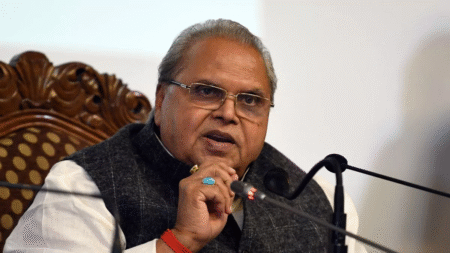In the global landscape, economic power is a key determinant of a country’s influence and quality of life. The world’s best countries in terms of economy are those that have managed to establish strong financial systems, robust industries, and sustainable growth. This article delves into the top-performing economies globally, analyzing their Gross Domestic Product (GDP), economic policies, and the factors contributing to their success.
Table of Contents
Whether you’re a student of economics, a business professional, or just someone curious about the world’s economic powers, this comprehensive guide will provide valuable insights into the economic standings of the world’s leading nations.
1. The United States: The World’s Largest Economy
The United States has long been recognized as the world’s largest economy. With a highly developed and diverse economic system, the U.S. consistently leads in innovation, technological advancement, and financial markets.
GDP and Economic Indicators
- GDP (Nominal, 2023): $26.7 trillion
- Key Sectors: Technology, Finance, Healthcare, and Manufacturing
- Economic Growth Rate (2023): 2.1%
Factors Driving Economic Success
The U.S. economy is powered by a combination of innovation, a large consumer base, and a dynamic private sector. Silicon Valley, home to some of the world’s largest tech companies, is a key driver of economic growth. Additionally, the U.S. benefits from a strong financial sector, with New York City serving as the financial capital of the world.
Challenges
Despite its strengths, the U.S. faces challenges such as income inequality, high healthcare costs, and trade tensions. The national debt, currently over $30 trillion, also poses a long-term economic risk.
2. China: The World’s Second-Largest Economy
Overview
China has rapidly ascended to become the world’s second-largest economy. Its economic model, characterized by state-led capitalism and a focus on manufacturing, has transformed the country into a global industrial powerhouse.
GDP and Economic Indicators
- GDP (Nominal, 2023): $19.4 trillion
- Key Sectors: Manufacturing, Export, Technology
- Economic Growth Rate (2023): 5.2%
Factors Driving Economic Success
China’s economic growth is largely driven by its manufacturing sector, which accounts for nearly 30% of global manufacturing output. The country’s “Belt and Road Initiative” (BRI) is another significant factor, as it aims to boost trade and stimulate economic growth across Asia and beyond. Additionally, China has been investing heavily in technology and innovation, particularly in areas like AI and renewable energy.
Challenges
China faces several economic challenges, including an aging population, increasing labor costs, and rising debt levels. The ongoing trade war with the United States has also impacted its export-driven economy.
3. Japan: A Technological Powerhouse
Overview
Japan, the world’s third-largest economy, is renowned for its technological advancements, strong industrial base, and disciplined workforce. Despite its relatively small size, Japan plays a significant role in the global economy.
GDP and Economic Indicators
- GDP (Nominal, 2023): $4.9 trillion
- Key Sectors: Automotive, Electronics, Robotics
- Economic Growth Rate (2023): 1.0%
Factors Driving Economic Success
Japan’s economy is driven by its advanced manufacturing sector, particularly in automobiles and electronics. Companies like Toyota, Sony, and Panasonic are global leaders in their respective industries. Moreover, Japan’s focus on innovation, research, and development has kept it at the forefront of technology.
Challenges
Japan faces a declining and aging population, which poses a significant challenge to its long-term economic growth. Additionally, the country has been dealing with persistent deflation and low consumer demand.
4. Germany: Europe’s Economic Engine
Overview
Germany is the largest economy in Europe and the fourth-largest in the world. Known for its engineering excellence, Germany’s economy is heavily reliant on exports, particularly in automobiles, machinery, and chemical goods.
GDP and Economic Indicators
- GDP (Nominal, 2023): $4.3 trillion
- Key Sectors: Automotive, Machinery, Chemicals
- Economic Growth Rate (2023): 0.8%
Factors Driving Economic Success
Germany’s economic strength lies in its robust industrial base, particularly in high-value sectors like automotive engineering and industrial machinery. Companies such as Volkswagen, BMW, and Siemens are global leaders. Additionally, Germany benefits from a highly skilled workforce and a strong focus on vocational training.

Challenges
Germany’s economy faces challenges such as an aging population, a potential slowdown in global trade, and energy dependence on external sources. The transition to renewable energy and the impact of Brexit are also areas of concern.
5. India: An Emerging Economic Power
Overview
India, the world’s fifth-largest economy, is one of the fastest-growing major economies. With a large and youthful population, India has significant potential for future growth, particularly in technology and services.
GDP and Economic Indicators
- GDP (Nominal, 2023): $3.7 trillion
- Key Sectors: IT Services, Agriculture, Manufacturing
- Economic Growth Rate (2023): 6.0%
Factors Driving Economic Success
India’s economy is driven by its IT services sector, which is a global leader. Companies like Tata Consultancy Services (TCS) and Infosys have put India on the map as a hub for technology and outsourcing. Additionally, India’s large domestic market and growing middle class are key drivers of economic growth.
Challenges
India faces challenges such as infrastructure deficits, regulatory hurdles, and income inequality. Additionally, the country’s large informal sector and high unemployment rates pose significant challenges to sustainable growth.
6. The United Kingdom: A Global Financial Hub
Overview
The United Kingdom, the world’s sixth-largest economy, is a major financial center, with London serving as one of the top global financial hubs. The UK’s economy is diverse, with strong sectors in finance, healthcare, and technology.
GDP and Economic Indicators
- GDP (Nominal, 2023): $3.1 trillion
- Key Sectors: Finance, Healthcare, Technology
- Economic Growth Rate (2023): 1.2%
Factors Driving Economic Success
The UK’s financial services sector is a key driver of its economy, with London being home to many of the world’s largest banks and financial institutions. The UK also has a strong higher education sector, attracting students from around the world, which in turn supports innovation and economic growth.
Challenges
The UK faces challenges such as the economic impact of Brexit, regional inequality, and inflation. Additionally, the country’s aging infrastructure requires significant investment to support future growth.
7. France: A Leader in Luxury and Industry
Overview
France, the world’s seventh-largest economy, is known for its strong industrial base, agricultural sector, and luxury goods industry. Paris, the capital, is also a major global financial center.
GDP and Economic Indicators
- GDP (Nominal, 2023): $3.0 trillion
- Key Sectors: Aerospace, Luxury Goods, Agriculture
- Economic Growth Rate (2023): 1.0%
Factors Driving Economic Success
France’s economy is driven by its strong industrial base, particularly in aerospace and automotive manufacturing. Companies like Airbus and Renault are key players on the global stage. Additionally, France is the world’s leading producer of luxury goods, with brands like Louis Vuitton and Chanel commanding global markets.
Challenges
France faces challenges such as high public debt, unemployment, and social unrest. The country also needs to address issues related to labor market rigidity and improve its business environment to attract more foreign investment.
8. Canada: A Resource-Rich Economy
Overview
Canada, the world’s eighth-largest economy, is known for its abundant natural resources, particularly in energy and mining. The country also has a strong services sector, including finance and real estate.
GDP and Economic Indicators
- GDP (Nominal, 2023): $2.3 trillion
- Key Sectors: Energy, Mining, Finance
- Economic Growth Rate (2023): 1.5%
Factors Driving Economic Success
Canada’s economy is heavily reliant on its natural resources, with oil and gas production being major contributors to GDP. The country also has a strong financial sector, centered in Toronto, and a well-developed real estate market. Additionally, Canada’s open immigration policy supports population growth and labor market expansion.
Challenges
Canada’s economy faces challenges such as fluctuating global commodity prices, environmental concerns related to energy production, and regional disparities in economic performance. The country is also grappling with housing affordability issues, particularly in major cities like Vancouver and Toronto.
9. South Korea: A Leader in Technology and Innovation
Overview
South Korea, the world’s tenth-largest economy, is a global leader in technology and innovation. The country is known for its advanced electronics, automotive, and shipbuilding industries.
GDP and Economic Indicators
- GDP (Nominal, 2023): $1.9 trillion
- Key Sectors: Electronics, Automotive, Shipbuilding
- Economic Growth Rate (2023): 2.0%
Factors Driving Economic Success
South Korea’s economy is driven by its highly advanced technology sector, with companies like Samsung and Hyundai leading the way. The country has also invested heavily in research and development, making it a global leader in innovation. Additionally, South Korea’s education system is one of the best in the world, contributing to a highly skilled workforce.
Challenges
South Korea faces challenges such as a rapidly aging population, high household debt, and geopolitical tensions with North Korea. The country also needs to address issues related to labor market rigidity and income inequality.
10. Italy: A Cultural and Economic Power
Overview
Italy, the world’s eleventh-largest economy, is known for its strong industrial base, particularly in fashion, automotive, and manufacturing. The country is also a major player in the global tourism industry.
GDP and Economic Indicators
- GDP (Nominal, 2023): $2.0 trillion
- Key Sectors: Fashion, Automotive, Tourism
- Economic Growth Rate (2023): 0.5%
Factors Driving Economic Success
Italy’s economy is driven by its world-renowned fashion industry, with brands like Gucci and Prada being global icons. The country also has a strong automotive sector, with companies like Ferrari and Fiat. Additionally, Italy’s rich cultural heritage makes it one of the most popular tourist destinations in the world.
Challenges
Italy faces significant economic challenges, including high public debt, slow economic growth, and an aging population. The country also struggles with political instability and regional disparities in economic performance.
Conclusion
The world’s best countries in terms of economy each have unique strengths and face specific challenges. The United States, China, and Japan lead the global economic landscape, while emerging economies like India show significant potential for future growth. Each of these countries has leveraged its resources, innovation, and economic policies to build robust economies that contribute to their global influence.
As the world continues to evolve, these economies will face new challenges and opportunities. Understanding the factors that drive their success can provide valuable insights for policymakers, businesses, and individuals alike.
Also READ : Elon Musk Clash with Brazil Deepens, Threatening Starlink
Source of information : The Top 25 Economies in the World











